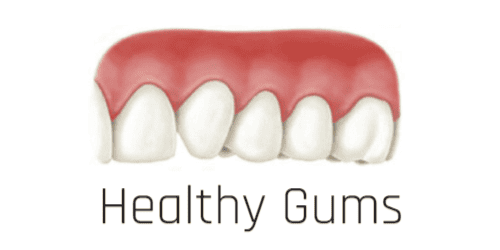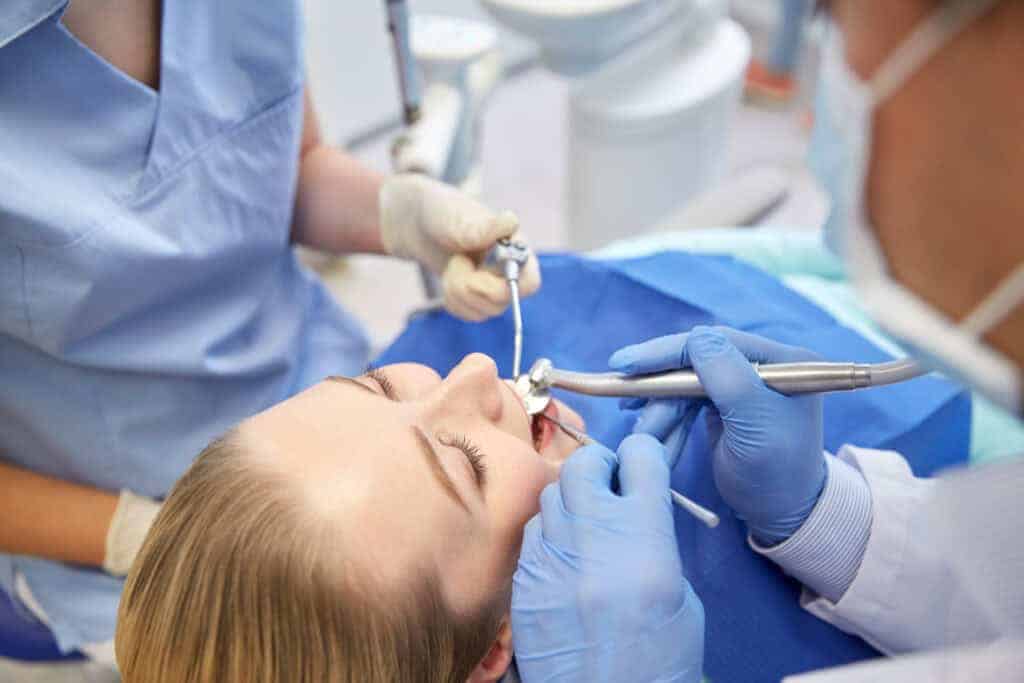
Periodontal recession describes the progressive migration of gum margins away from the tooth crown, resulting in root surface exposure. Under healthy circumstances, tooth roots should remain entirely protected by adequate gum coverage and underlying alveolar bone support. When root surfaces become apparent, this indicates deterioration of the tooth’s supporting apparatus. This phenomenon commonly produces sensitivity to temperature changes, cosmetic concerns due to apparent tooth lengthening, and an increased risk of bacterial infections or tooth mobility. Early recognition and therapeutic intervention are essential for preventing these adverse sequelae.
The comparative diagram effectively demonstrates the difference between intact gum health and recession-compromised tissue. Healthy periodontal tissue maintains vibrant coloration and firm texture and creates an effective seal around each tooth, providing maximum structural support. Areas experiencing recession show diminished tissue volume that has migrated away from tooth surfaces, creating gaps that expose sensitive root areas. This exposure increases vulnerability to environmental stimuli, microbial invasion, and structural instability.


The diagram illustrates a clear demarcation between healthy gums and gums experiencing recession. In the healthy gum section, the tissue appears pink, firm, and tightly surrounds the teeth, providing optimal support and protection. Conversely, in the recession area, the gums display signs of shrinkage, appearing visibly thinner and receded from the tooth surface. This recession exposes the tooth roots, potentially leading to sensitivity, increased risk of decay, and compromised dental health.

Periodontal recession indicates systemic oral health issues requiring targeted intervention to reestablish comfort, functionality, and aesthetic appeal. Treatment approaches are tailored based on the extent of the recession and individual patient concerns.
The therapeutic process commences with a comprehensive periodontal assessment to determine tissue health status and define treatment goals. Our primary therapeutic objectives include fortifying the periodontal support system around compromised teeth and achieving predictable root coverage to optimize both clinical outcomes and aesthetic results.
Surgical periodontal grafting represents the most reliable and naturally compatible solution for recession management. This technique involves acquiring healthy tissue from a suitable donor location within the oral cavity and precisely positioning it over recession sites to reestablish appropriate root protection. Our Jenks practice specializes in advanced, patient-centered treatment approaches designed to restore periodontal health and enhance smile aesthetics through contemporary surgical methodologies.
Periodontal recession typically originates from two primary sources: microbial plaque deposits and mechanical tissue damage. Understanding these mechanisms facilitates the development of effective preventive strategies.
Plaque formation involves a complex bacterial ecosystem mixed with food particles that adhere to teeth continuously throughout daily activities. Without systematic removal through comprehensive oral hygiene protocols and regular professional maintenance, this microbial burden evolves into periodontal inflammation. Periodontal disease progressively destroys tooth-supporting tissues and constitutes a leading factor in adult tooth loss statistics.
Additional recession factors include physical trauma to periodontal tissues. Various traumatic influences encompass excessive brushing pressure, improper flossing methods, injuries from consuming abrasive foods, excessive occlusal forces, nocturnal grinding behaviors, orthodontic appliance friction, or abnormal tooth movement patterns.
Tissue conservation strategies emphasize the use of appropriate oral care instruments, such as ultra-soft toothbrushes and gentle cleaning formulations, particularly for patients who demonstrate susceptibility to recession. Correcting bite abnormalities through occlusal therapy or custom protective devices offers significant benefits. Structural factors, including muscle attachment positions, may influence the progression of recession and require professional evaluation. Effective prevention protocols address each patient’s specific risk profile to prevent continued tissue deterioration.

Dental Implants, Gum Disease Treatment and Gum Recession Services